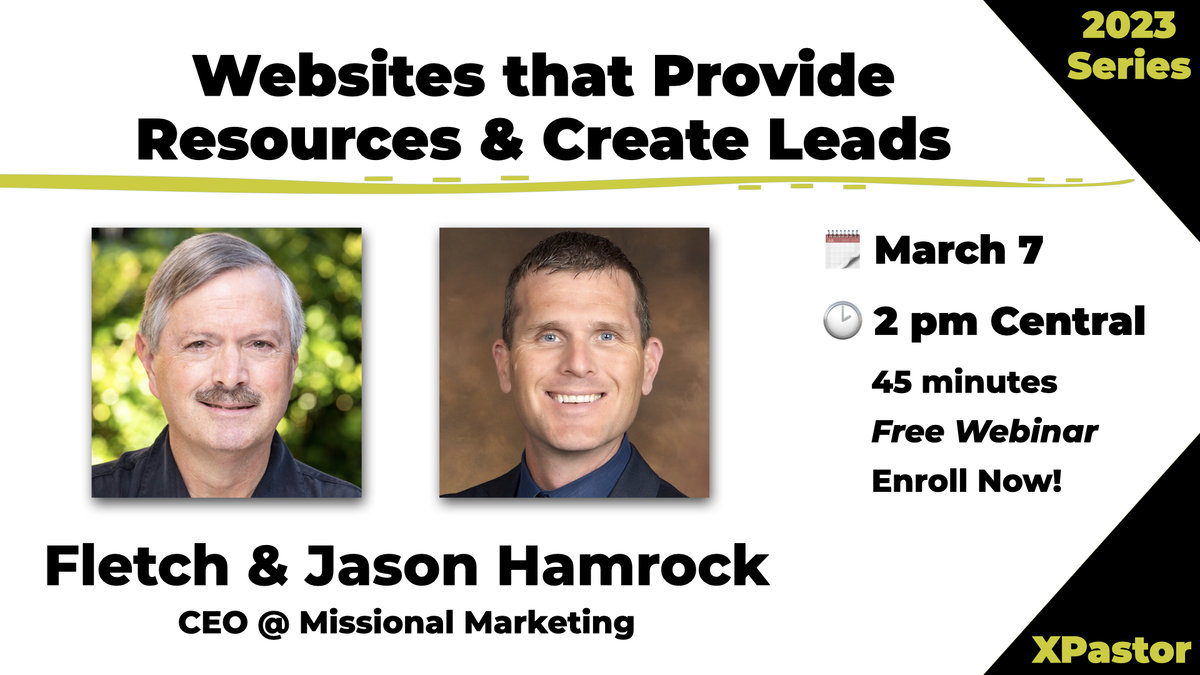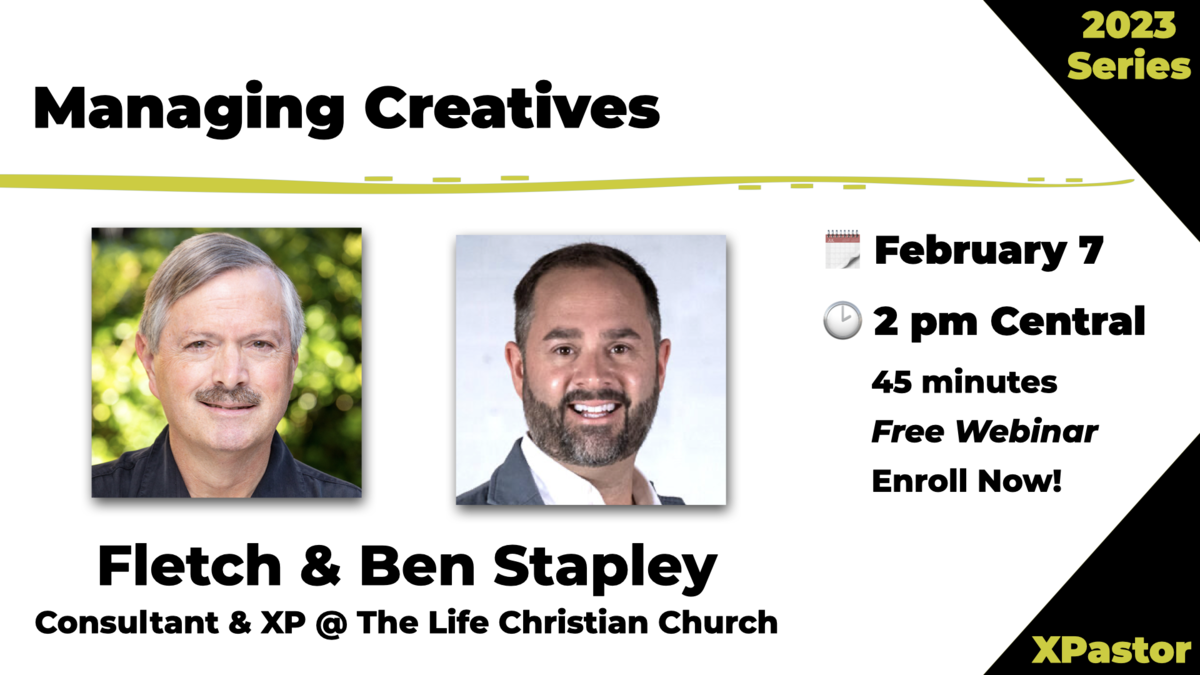Churches re-brand to emphasize their vibrant and living spiritual DNA. Let’s look at two churches to discover some principles that can help your church re-brand. Scofield Church in Texas and Oak Hill Church in Georgia have recently re-branded, the process of taking a stale image and putting zip into it. Along the way, ask yourself questions about your church brand—stale or vibrant, dull or alive?
In my former article on Branding and Re-Branding, I gave a simple definition: Branding is the words and graphics that cogently and memorably produce awareness of your church. It is just nonsense to think that your church doesn’t have a brand. If you put a name on the side of your church, if you have letterhead or business cards, then you have a brand.
Why use the word “zip” in relation to a church image? You don’t accept boring preaching or lifeless worship at your church. The same should be true of the words and graphics that describe your church to the world. All around us are well-used and effective business monikers and images.
- Where would American Airlines be without the initials AA, the aa.com website and its trend-setting AAdvantage Program? See www.aa.com.
- McDonalds is memorable with its golden arches and drive through windows. See www.mcdonalds.com.
- Target stores stand out with a red logo of its namesake. See www.target.com.
How does your church identify itself?
A brand should have a combination of memorable icons, consistent colors, and simplicity. Is your church’s image memorable and vibrant?
Spiritual DNA
That hard to pronounce acid with the shorthand of DNA is at the core of every cell in the human body. DNA is like a blueprint and every person on spaceship earth has a different DNA, 6.6 billion unique DNAs on the planet in 2008.
So, it is with churches. Every church has its own and unique spiritual DNA. Your church might be seeker or education centered, healing or care-giving. Every church’s spiritual DNA includes, in some way, Jesus’ Great Commission, “Go and make disciples,” and Great Commandment, “Love your neighbor.” Your DNA is the defining value, the spiritual blueprints of your church. What is being reproduced from those blueprints?
Re-branding puts words and images to the spiritual DNA of your church. The process of re-branding may discover a deep need in your congregation—that you have challenges ahead to live up to your spiritual DNA. Re-branding may be the opportunity to look at the issues of congregational care, friendliness, community outreach, and visitor follow-up. Have you thought about your church’s spiritual DNA? Can you define it? Are you living up to it?
Here are some questions to ask about your current brand and spiritual DNA:
- Does the logo and slogan still fit our DNA? Do our words and images align with the spiritual DNA of the church? Do we know the spiritual DNA of our church?
- Does the old brand communicate our spiritual DNA to others? Is it appropriate as the welcome mat to the community? Or are we just talking to ourselves with Christian jargon?
- Does the average congregant know the brand? Can they draw the logo from memory and write the mantra?
If you are having trouble answering these three questions, then you are ready to re-brand. It is time to give new words and images to your spiritual DNA.
Historic and Passionate Scofield
Scofield Memorial Church, www.scofield.org, is a historic church in Dallas, Texas. When Dr. Matthew St. John came as their new Senior Pastor a few years ago, the church realized that it needed to re-brand.
When Matthew became the pastor, Scofield had an existing mantra. Your church may also have a catch phrase or motto. Mottos are typically reductions from a wordy vision statement that few can remember. Often a motto is put below or next to the church logo.
Scofield Memorial Church used to have the catch phrase, The Bible as it is for men as they are. It was memorable and was celebrated in the church for years. Matthew St. John said: “Dr. Harlin Roper in the twenties or thirties, at the height of fundamentalism and the fight for the Scriptures’ authority created it, but it has seemed a bit wooden.” Once inaugurated, this mantra stuck like glue. It was above the stage in the worship center. It was on the letterhead and spoken from the pulpit regularly. It defined the church!
But, times change and the issues of the 1920’s are not the issues seventy and eighty years later. Matthew noted that “it was ‘men as they are’ until sometime in the 90’s when the church decided to be more politically correct.” So, the tagline lost its shine when people began to think “what about women?” and “does it still fit us?” Matthew continued: “In fact, I’ve told the congregation many times that it supplants Jesus as the object of our affection and places the Bible on the throne. I’d rather it be, and I’ve said this a lot, ‘Christ as He is for people as they are.’” Scofield Church found that their motto was not only dated but poorly expressed their theological convictions. Does your motto represent your theological convictions? Is your motto tired and dated?
Scofield went to task and came up with a new motto. Matthew St. John said, “The tag line Passionately Proclaiming the Savior Since 1877 was introduced about two years ago. Obviously, one of the key elements of Scofield Memorial Church is its rich heritage. We don’t want to live in the past by any means, but we don’t wish to avoid it either, thus the since 1877. That said, however, our greater aim is to look forward, and the summation of all that we are is proclaiming the Savior and doing with gusto; that is why, of course, you have Passionately Proclaiming the Savior.”
Interesting to note, Scofield Memorial Church dropped the word Memorial from its logo and they also dropped the word Church! The new logo has a picture of the worship center accompanied by the motto. The picture of the building shows an architectural style that could only be a church or civic building. The text, Passionately Pursuing the Savior, clearly conveys the building as a Christian gathering place. Thus, the concept of church is included in the picture but not the text. Also, using the post-modern emphasis of ancient-future, Scofield included the words since 1877. The church has centered on its core mission and longevity. Scofield has gone “back to the future” with a vital and vibrant expression of their spiritual DNA.
The pastor of Scofield also notes that the re-branding includes living out their spiritual DNA: “This motto is not necessarily indicative of the means by which we accomplish it. The means are clarified by our three-part declaration of what we seek to be about: Connect … Grow … Impact. Of course, each of these are pregnant with meaning, and we are actually right now reorganizing our staff system so as to better reflect these three points.” This underscores an important part of any re-branding—that the brand must be consistent with the spiritual DNA of the church. Scofield is in a process of aligning their brand with their envisioned future.
Oak Hill’s Problem and Solution
Another church that has recently re-branded is Oak Hill Baptist Church of Griffin, Georgia,www.whereeverylifematters.com. Their old motto was Small enough to care, big enough to celebrate! When they were four months away from opening their new worship center, they realized that they needed to re-brand!
Paul Sewell said, “Oak Hill’s decision to re-brand was made in a meeting with church leaders. I put about twenty different publication pieces from our church on a table. The pieces all looked different because they were made by different people with different skills from different departments. I asked the question, “Does this effectively communicate who we are and what we do?” The resounding answer was, ‘No, we need to fix this.’” If you examined ten communication pieces from your church, would they have a consistent look and feel?
For the re-branding, Oak Hill hired Details Communication,www.detailscom.com. They began a discovery phase to discern the spiritual DNA, instead of, as Paul says, “inventing what we wanted to be.” Oak Hill developed the words for the mantra, mission, and values before working on logos and other images. Paul says, “The brand centers on the idea that Every Life Matters. This mantra describes the essence of Oak Hill.”
They next developed the logo. Since people refer to Oak Hill Baptist Church as Oak Hill, they dropped Baptist Church from the logo. Yet, Paul says, “The cross on the logo helps signify that we are a church even without the word church. The logo is circular to represent movement because the church is a movement, not an institution. The threads around the cross represent each of our lives that are intertwined with one another.” After the logo, Oak Hill brought the brand into worship graphics, printed materials, and a new website.
The entire package for Oak Hill looks like this: New Mantra: Oak Hill: Where Every Life Matters. Mission Statement: Oak Hill: Committed to a living faith that impacts lives. Values: A Living Faith is … Worshipful, Experiencing Christ’s presence through a life of worship; Involved, Growing in Christ and investing in the lives of others; Caring, Giving everyone Christ’s unconditional love; Missional, Equipping people to live Christ’s mission always and everywhere.
Oak Hill has a great slogan, and they made it their web address, but they have to live up to it. Oak Hill will be measured by the question, “does every life matter?”
Conclusion
Scofield Church in Dallas was able to utilize a brand that kept their historic identity, yet brought out their spiritual DNA of being passionate for Christ. By looking deeply at who they were, Oak Hill found in their DNA a commitment to every life matters. Both churches broadly publicized the new brand. Brands need to be plastered on everything—from signs to letterheads, from windows to doors.
In publicizing their spiritual DNA, both churches are now accountable to their members and the public to live up to their claim. Both churches re-branded in order to emphasize their vibrant and living spiritual DNA.
The church is an organism, and so it is living and dynamic. Scofield is in the process of aligning its staff with the spiritual DNA. Oak Hill is communicating the new vision and values in hallway signs and websites. This is good medicine to remember: As your church re-brands, implement the concept of your brand! It may take some time but be on the path of implementing your new brand.
Also published in the February 2008 edition of Church Executive magazine











